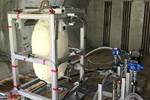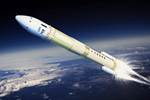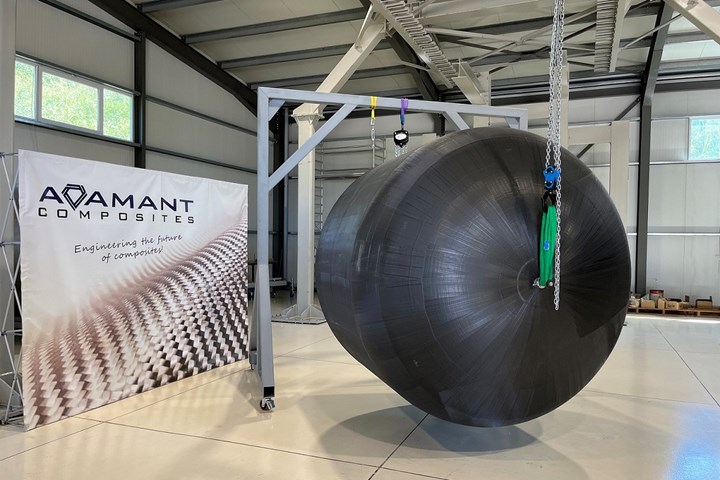HyImpulse, Adamant Composites linerless CFRP tank passes hydrostatic burst test
The liquid oxygen (LOX) tank, to be used in a HyImpulse smallsat launch vehicle, demonstrates the ability to withstand pressures well beyond the limits of its intended use.
HyImpulse Technologies (Neuenstadt am Kocher, Germany), in partnership with Greek advanced composite manufacturer Adamant Composites Ltd. (Platani-Patras), announce the successful completion of a hydrostatic burst test of a linerless carbon fiber-reinforced polymer (CFRP) liquid oxygen (LOX) tank. This marks a key milestone in the development of HyImpulse’s orbital Small Launcher, SL1.
According to HyImpulse’s website, SL1 will be a three-stage smallsat launch vehicle with hybrid rocket engines that will transport satellites with a payload of up to 500 kilograms into a dedicated Earth orbit. In addition to CFRP oxidizer tanks, the rocket will have a CFRP fairing — a component that protects satellites on the top of the launch vehicle.
The hydrostatic burst test is a critical step in the development of any pressure vessel and is used to ensure the safety and reliability of the tank under extreme conditions. The test subjects the tank to pressures far beyond what it is expected to experience in normal operation, to identify any potential weaknesses or failure points.
Adamant Composites reports that the linerless CFRP LOX tank passed the test with flying colors, demonstrating its ability to withstand pressures well beyond the limits of its intended use. HyImpulse and Adamant Composites declare this an important achievement, as the use of linerless CFRP tanks in space applications is relatively new in Europe and has not been extensively tested.
“The use of linerless CFRP in our LOX tanks significantly improves our performance and reduces weight and cost,” Mario Kobald, CEO of HyImpulse, says. “This successful test brings us one step closer to bringing this innovative technology to SL1 and revolutionizing the space launch industry.”
“We believe that revolutionizing access to space passes through revolutionizing composites structures design and manufacturing,” Antonios Vavouliotis, CEO of Adamant Composites, adds. “The unique full composites design provides 30% mass savings, while the robotic-inspired production process reduces the cycle time by 50% and cost by 25%.”
Related Content
-
Carbon fiber, bionic design achieve peak performance in race-ready production vehicle
Porsche worked with Action Composites to design and manufacture an innovative carbon fiber safety cage option to lightweight one of its series race vehicles, built in a one-shot compression molding process.
-
Infinite Composites: Type V tanks for space, hydrogen, automotive and more
After a decade of proving its linerless, weight-saving composite tanks with NASA and more than 30 aerospace companies, this CryoSphere pioneer is scaling for growth in commercial space and sustainable transportation on Earth.
-
Plant tour: Teijin Carbon America Inc., Greenwood, S.C., U.S.
In 2018, Teijin broke ground on a facility that is reportedly the largest capacity carbon fiber line currently in existence. The line has been fully functional for nearly two years and has plenty of room for expansion.
















